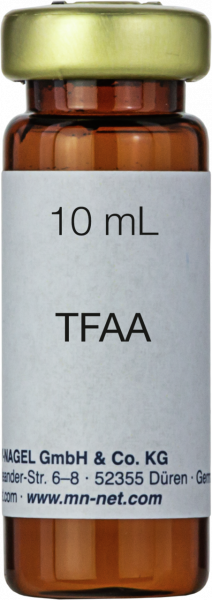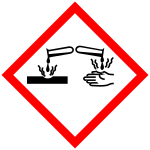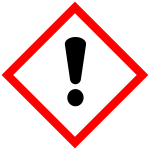Cookie preferences
This website uses cookies, which are necessary for the technical operation of the website and are always set. Other cookies, which increase the comfort when using this website, are used for direct advertising or to facilitate interaction with other websites and social networks, are only set with your consent.
Configuration
Technically required
These cookies are necessary for the basic functions of the shop.
"Allow all cookies" cookie
"Decline all cookies" cookie
CSRF token
Cookie preferences
Currency change
Customer recognition
Customer-specific caching
Individual prices
Region preferences
Selected shop
Session
Comfort functions
These cookies are used to make the shopping experience even more appealing, for example for the recognition of the visitor.
Note
Derivatization reagents for GC, acylation, TFAA

Product configuration
Do you have any questions?
Please contact us. Select variant first $0.00 * (0% Saved)
*taxes and shipping not included
Item number: 701130.110 027030385030
Package unit 1 Pack(s) The acylation reagent TFAA as anhydride creates corresponding acids as by-products. Excess... more
The acylation reagent TFAA as anhydride creates corresponding acids as by-products. Excess reagent and the acid formed have to be removed. Acylation with fluorinated acid anhydrides forms stable derivatives suited for FID as well as for ECD detection. These products contain harmful substances which must be specially labeled as hazardous. For detailed information please see SDS. These products contain harmful substances which must be specially labeled as hazardous. For detailed information please see SDS.
Are you interested in real-world applications for this product? Click here to view the application notes.
| Selling unit | 1x10 mL, 5x10 mL |
| Method | Gas chromatography (GC), derivatization |
| Composition | Trifluoroacetic acid anhydride (TFAA) |
| Derivatization type | Acylation |
| Recommended application(s) | Acylation, Alcohols, Amines, Amino acids, Carboxylic acids, Derivatization, Phenols, Steroids |
| Storage temperature | 2–8 °C / 36–46 °F |
| Hazardous material | Yes |


DANGER
H314 Causes severe skin burns and eye damage.H332 Harmful if inhaled.H412 Harmful to aquatic life with long lasting effects.HEUH014 Reacts violently with water.
P260sh Do not breathe dust/vapours.P261sh Avoid breathing dust/vapours.P264 Wash hands thoroughly after handling.P271 Use only outdoors or in a well-ventilated area.P273 Avoid release to the environment.P280sh Wear protective gloves/eye protection.P301+330+331 IF SWALLOWED: Rinse mouth. Do NOT induce vomiting.P303+361+353 IF ON SKIN (or hair): Take off immediately all contaminated clothing. Rinse skin with water [or shower].P304+340 IF INHALED: Remove person to fresh air and keep comfortable for breathing.P304+340 IF INHALED: Remove person to fresh air and keep comfortable for breathing.P305+351+338 IF IN EYES: Rinse cautiously with water for several minutes. Remove contact lenses, if present and easy to do. Continue rinsing.P310 Immediately call a POISON CENTER/doctor.P312 Call a POISON CENTER/doctor if you feel unwell.P363 Wash contaminated clothing before reuse.P405 Store locked up.P501 Dispose of contents/container to regulated waste treatment.P501 Dispose of contents/container to regulated waste treatment.
